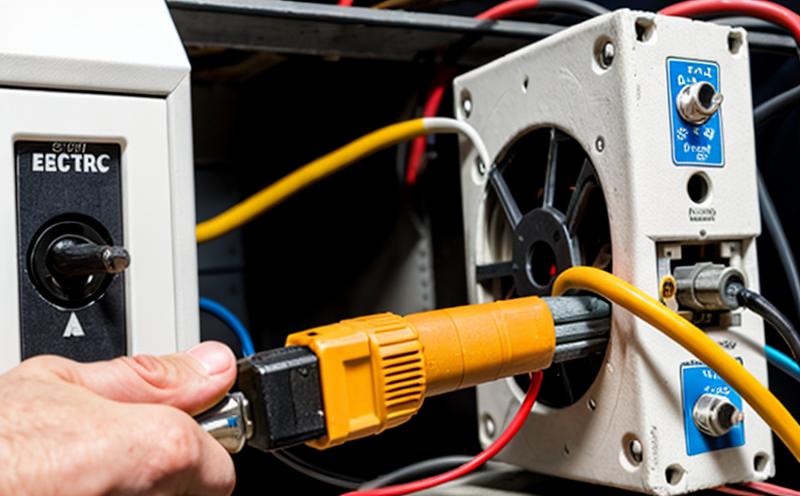IEC 61000-4-4 Electrical Fast Transient/Burst Testing
The IEC 61000-4-4 standard addresses the issue of electrical fast transient/burst (EFTB) disturbances, which are common in industrial and commercial environments. These transients can occur due to lightning strikes, switching operations, or other electromagnetic interference events. This standard ensures that equipment can withstand such disturbances without performance degradation or failure.
The test procedure involves exposing the specimen to a series of transient pulses. The pulses are characterized by short duration (typically less than 1 μs) and high amplitude voltage transients. The goal is to simulate real-world conditions where electrical equipment might be exposed to these rapid changes in voltage or current.
For accurate testing, the specimen must meet certain preparation criteria before undergoing EFTB testing. This includes ensuring that all connections are secure, grounding has been properly established, and any necessary circuit modifications have been made as per the test requirements.
The testing apparatus used for this procedure typically consists of a transient generator capable of producing controlled bursts of energy. The equipment under test is connected to this generator through appropriate cables and connectors designed to minimize any additional interference or noise that could affect the integrity of the test results.
Testing parameters are critical in ensuring accurate assessment. These include defining the number and duration of pulses, their amplitude levels, and the time intervals between them. Compliance with these parameters ensures that the equipment being tested undergoes realistic stress conditions similar to those it would encounter during actual operation.
The acceptance criteria for passing this test are stringent; they ensure that the equipment maintains its performance capabilities after exposure to specified transient events. Passing involves demonstrating no significant changes in critical functions or characteristics of the device under test.
Understanding how IEC 61000-4-4 applies across various sectors is essential for effective implementation and compliance. This standard is particularly relevant in industries such as telecommunications, power generation, automotive manufacturing, and aerospace where reliability and robustness against electromagnetic interference are paramount.
| Industry Sector | Application |
|---|---|
| Telcommunications | Ensuring robust communication systems. |
| Automotive Manufacturing | Testing ECU and other electronic components. |
| Petroleum & Gas | Protecting process control systems from transient events. |
| Aerospace | Verifying avionics and other critical electronic units. |
Applied Standards
The IEC 61000-4 series of standards provides comprehensive guidelines for assessing the susceptibility and resilience to electromagnetic disturbances. Specifically, IEC 61000-4-3 covers surge voltage (differential mode), while IEC 61000-4-5 deals with lightning surges.
IEC 61000-4-4 focuses on electrical fast transients/bursts, which are a subset of transient electromagnetic phenomena characterized by their short duration and high energy content. This standard is crucial for ensuring that electronic devices can operate reliably even when subjected to sudden spikes in voltage or current.
Compliance with IEC 61000-4-4 helps manufacturers meet regulatory requirements and improve the overall quality of their products, leading to enhanced customer satisfaction and reduced warranty claims. It also supports continuous improvement initiatives aimed at reducing product failures caused by environmental stressors.
Industry Applications
- Telcommunications: Ensuring robust communication systems.
- Automotive Manufacturing: Testing ECU and other electronic components.
- Petroleum & Gas: Protecting process control systems from transient events.
- Aerospace: Verifying avionics and other critical electronic units.
Environmental and Sustainability Contributions
By ensuring that electrical equipment meets stringent EFTB testing standards, laboratories contribute significantly to environmental protection. Robust and reliable equipment reduces the likelihood of failures leading to unplanned shutdowns or malfunctions.
Moreover, compliance with these tests supports sustainable practices by promoting longer operational lifespans for devices, reducing waste associated with premature failure. Additionally, it fosters innovation within the industry towards more resilient designs capable of enduring harsh environments without compromising performance.





